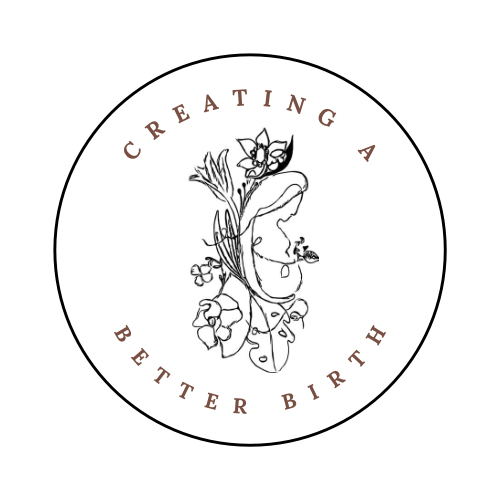
What is the placenta?
The placenta is an organ that your body creates to provide oxygen and nutrition to your growing baby. It also functions to remove toxins and waste within your uterus during pregnancy. The placenta usually attaches itself to the top or side of the inner wall of your uterus. It then connects to your baby through the umbilical cord.
What is placenta previa?
Placenta previa is a condition in which the placenta has attached itself to the lower part of your uterus. This results in some portion of the placental tissue covering the cervix. This means that the placenta can cover all or part of the cervical opening. Placenta previa is not super common, as it only occurs in about one in every 200 pregnancies.
How do I know if I have placenta previa?
Placenta previa is one main reason I suggest you have at least one ultrasound around halfway through your pregnancy. This ultrasound will allow your medical provider to diagnose you with previa and allow you to plan your birth accordingly. Some women prefer to not have any sonograms at all, but it is my personal recommendation to at least receive one.
Previa symptoms
There isn’t really a way to know if you have placenta previa unless your doctor or midwife are able to see and diagnose it. That being said, you may experience random problems that can point to a previa issue.
- You may experience painless, bright red vaginal bleeding as far as 20 weeks or more into your pregnancy.
- You can also have bleeding accompanied by pre-labor contractions. Bleeding may be triggered by sex or a vaginal exam.
- Some women never experience bleeding until labor begins. And some women experience bleeding that has not been triggered by anything at all. If you ever experience vaginal bleeding during pregnancy, contact your medical provider right away.
Previa causes
There is no known cause for placenta previa. Therefore, there is no way to prevent it from happening. If you have placenta previa, there’s nothing wrong with you or your body. Your placenta has just simply decided that it should attach itself to the base of your uterus instead of the top or side.
Complications associated with placenta previa
There are several situation’s and/or complications that can make you high risk. Placenta previa is considered a high-risk pregnancy condition.
A few of the most common complications associated with this condition are:
Preterm birth, placenta accreta spectrum, and major bleeding.
- Preterm birth: In some cases, severe bleeding may result in an emergency C-section to save yours and your baby’s lives. Since pregnancy can be unpredictable, this issue can sometimes occur before your baby is full term.
- Placenta accreta spectrum: placenta accreta spectrum covers a group of conditions associated with placenta previa. With these conditions, your placenta can sometimes grow through or embed itself into the wall of your uterus. Placenta acretia is always considered high risk as it can result in heavy bleeding during pregnancy or delivery.
- Hemorrhage: placenta previa is sometimes associated with severe vaginal bleeding. Previa is an unpredictable condition, and you never know when bleeding may occur. It is possible to experience a hemorrhage during pregnancy, labor, delivery, or in the first few hours after delivery. Be sure to immediately let your doctor or midwife know if you experience any type of spotting or vaginal bleeding.
Is there a chance that my placenta could move?
Yes! There’s a chance that your placenta will move out of the way of your cervix before the baby is due. When your uterus grows, the lower part of your womb grows at a faster rate than the upper part. So it is very possible for the placenta to move away from the cervix. Placenta previa is usually caught at the anatomy scan halfway through your pregnancy. Your medical provider then has you come back in for another sonogram around 32 weeks to see if the placenta has moved or not.
Statistics say that 90% of placentas move away from the cervix (allowing for a vaginal delivery) and around 10% remain too low for your baby to be born vaginally. A repeat sonogram is typically performed around 36 weeks to re-check the location of the placenta. This allows your doctors or midwives to best help you prepare for your birth. At this point, they will be able to tell you whether you need a C-section or whether you are able to birth vaginally.
Can I have a vaginal birth with placenta previa?
Unfortunately, the answer to this is no. When the placenta covers the cervix, there’s no way for the baby to get out. Attempting a vaginal delivery when the baby’s exit is covered is extremely dangerous. A C-section is the safest route to take when you have placenta previa.
Don’t worry though! You still have options! C-section is not a single lane road, there are several different things you can do to make your C-section your own beautiful birth experience.
A few things you can request are:
- A gentle cesarean. A gentle cesarean section is less “ routine” and more family centered. In some hospitals, they will allow for immediate skin to skin, delayed cord clamping, they allow your body to naturally push the baby out through your incision instead of manually,\ pulling the baby from your uterus, immediate skin to skin with Dad after mom, a type of “golden hour” where are you were able to breast-feed while still in the operating room, and so much more! Talk with your midwife, doctor, or Doula as you write out your birth plan and prepare for your gentle cesarean.
- Plan for postpartum support. Giving birth is taxing on your body, and a C-section is even more taxing. You have a little human to care for, you’re learning how to breastfeed, and your core strength is compromised because of your incision. Plan ahead, if possible, to have some postpartum support for the first couple weeks after the baby comes. Meal trains, someone to watch the other children, consider finding a postpartum Doula, etc. Having the opportunity to rest for around 2 weeks after the birth can make a huge difference in your recovery time.
- Speak with a therapist. Many women struggle when they have an idea in their mind of how they want their birth to go, and then it goes a completely different direction. Speaking with a licensed professional (who is trained in how to best support you mentally during this time) can make a huge difference in how you process the thought of having a C-section. This may seem like an unnecessary step, but some women swear it can make all the difference when processing the loss of the birth you wanted.
- Hire a birth photographer. Sometimes the medications you receive during a C-section make you feel loopy or “out of it”. You may also not be able to see everything that gores on (like your partners reactions or the baby’s face when he/she is first born). Having a birth photographer present to capture the first precious moments enables you to look back on the birth and process it over time. You will also have those snapshots of your birth forever. Make sure you ask your medical provider ahead of time whether they allow a photographer in the operating room so you can let your photographer know.
- Get excited! If you’re feeling discouraged about your previa diagnosis, focus on and lean into the perks of having a C-section. A few perks are: only experiencing minimal labor pains, knowing right when your baby will be born, you are able to plan things around the date of your C-section, and so much more! Try to look at your planned C-section as a blessing and embrace it as much as possible. This is the day you will finally meet your little baby! What could be more exciting than that!?
Whether you birth your baby vaginally or by C-section, it’s a good idea to have a birth plan written. Turn it into your medical team a few weeks before your due date so they know how to best serve you when your baby is born. Especially in a case where you know your situation is going to be different than a typical birth, you should have a plan in place so your medical providers know how to best care for you. If you need a template, I have one posted here.
Disclaimer: All content and media on the Creating a Better Birth website is created and published online for informational purposes only. It is not intended to be a substitute for professional medical advice and should not be relied on as health or personal advice. Always seek the guidance of a qualified health professional with any questions you may have regarding your health or a medical condition. Never disregard the advice of a medical professional, or delay in seeking it because of something you have read on this Website.
If you think you may have a medical emergency, call your doctor or call emergency services. If you choose to rely on any information provided by Creating a Better Birth, you do so solely at your own risk.

I dont suppose Ive learned anything like this before. So good to search out someone with some authentic ideas on this subject. really thank you for bringing this up. this web site is something that’s needed, someone with some originality.
Very nice post, I surely love this site, keep it up.
*This is the right blog for anyone who wants to find out about things like this. You realize so much its almost hard to argue with you (not that I actually would want to…HaHa). You definitely put a new spin on a topic thats been written about for years. Great stuff, just great!
I have been searching for information like this for quite sometime. About three hours of online searching, at last I found it in your blog. Thank you